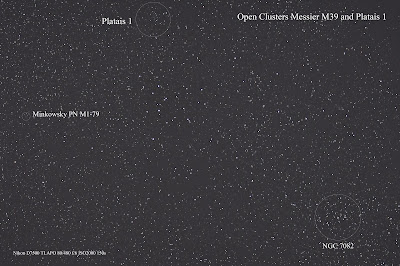 |
| Flattener at a distance of 10mm from sensor showing clearly aberration at the edges. |
According to the technical data the ideal working distance to the sensor is depended of the focal length of the refractor :
♦ focal length < 450 mm: 128 mm
♦ focal length 450-490 mm: 123 mm
♦ focal length 500-550 mm: 118 mm
♦ focal length 560-590 mm: 116 mm
♦ focal length 600-690 mm: 113 mm
♦ focal length 700-800 mm: 111 mm
♦ focal length ab 800 mm: 108 mm
An underrun or an overrun of the distance of up to 5% has no visible effect on the sharpness in the field of sensors with formats up to APS-C. With larger sensors, the tolerance is reduced to 1-2%.
 |
| Flattener 100mm - Picture is sharp at the edges |







